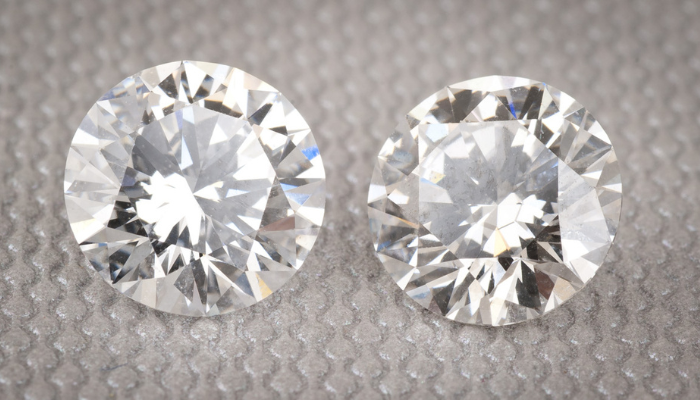How do lab-made diamonds compare to natural diamonds?
Sep 22nd 2023
Lab-made diamonds are the same as mined diamonds because both have the same criteria for manufacturing except for the existence of a lab. The same chemical, physical, and optical belongings are used for the creation of both types of diamonds. Both types of diamonds are given the same heat and sparkle.
Now, there is the question in the mind of many readers as well as writers: how do lab-made diamonds compare to natural diamonds? To solve this query, we will discuss the above statement step by step.
- Lab-grown diamond is inexpensive
- Natural diamond takes a truckload of years to grow
- Lab-grown diamond has a unique history and charm
- Natural diamond has a distinct characteristic
- Both have different values, ethics, and preference
- Lab-made diamonds are created in an artificial way
No doubt, both lab-made and mined diamonds have some similarities as well as differences, but how can you explain the different diamond shapes along with their characteristics? It is the task of an explorer to make it unique to any other kind of diamond. But still, the most rising question in the mind of the explorer is how lab-made diamonds compare to natural diamonds.
Diamonds are of different shapes and figures. There are Oval Lab Grown Diamonds, round-shaped Lab Grown Diamonds, and square-shaped diamonds that are found in their distinct style and allure the spectators and customers.

Are lab-grown diamonds real? Or how do lab-made diamonds compare to natural diamonds?
Yes, lab grown diamonds are genuine as they are made of genuine diamonds, but they have discrete origins and appearances. They are created in skillful surroundings, reproducing the situations under which natural diamonds are formed. Lab grown diamonds have indistinguishable beauty and physical belongings from natural, mined diamonds, but the cost ratio is less.
Lab diamonds are different from artificial diamond cause they are formed in an artificial environment, but mined diamond is grown on the earth for a long time.
Fundamentally, lab and natural diamonds look the same. Business experts and chief scientific publications, like Science Focus, agree with the above statement and assert that they are available in all kinds of shapes and sizes. If you had a lab diamond and a natural diamond near you, it would be impossible to tell the difference. They even have virtually equal chemical structures.
The cost difference between natural and lab-made diamond
The cost of lab diamonds is still in continuous fluctuation. Four to five years ago, diamonds was more costly than natural lab because of its increasing ratio limited from 20 to 25%. But, in this modern age, lab diamonds are cheaper than natural ones by up to 75%.
Supply difference between both diamonds
Both types of diamonds have the same structure and shape, but their supply rate is different. The ratio of natural diamond supply is partial as compared to lab-made diamond because a lab-made diamond has no cap for supply, which drives its value slowly.
Final opinion
However, there are some apparent differences between natural and hand-made diamonds that need to be focused while purchasing. It is hard to answer this question because, in appearance, both look the same if you are told the difference. The value of lab-made diamonds is sinking at a disturbing rate and shows no signs of withdrawal. Keep this statement into account while making a purchase. The similar lab diamond bought for $1,000 today may be priced at a fraction of that amount in just one or two years. However, still, the hottest issue of discussion in societies is how lab-made diamonds compare to natural diamonds.
Natural diamonds often recollect around 50% of their original value; lab-created diamonds are virtually dreadful to sell back without tolerant pennies on the dollar. The difference in resale value between natural and synthetic diamonds is even more significant than the difference in price. You mislay a considerable ratio of its value the moment you make the purchase. Lab-created diamonds are falling in price, and natural diamonds are historically rising in worth; your synthetic diamond will almost positively be more valueless than an expected one of a similar mark, even before seeing the difference in reselling value.

